
Balance exercises for athletes have always been something I knew were important. However, after talking with Chapmann Cheung, I truly understood just how crucial they are not only for athletes but for everyone, regardless of fitness level.
Today, I will share the continuation of the interview I had with Chapmann Cheung. He emphasized the importance of balance training exercises for athletes in improving overall athletic performance. Incorporating these exercises into training routines can significantly enhance stability and coordination, which are crucial for excelling in any sport.
Before we dive into the interview, I want to share a quick story.
Last winter, my family and I had a snowball fight at a local sit-ski hill and enjoyed some winter fun. Watching my son run and dodge effortlessly reminded me how vital balance is in everyday life. Here’s a photo of my son in the middle of our snowball fight.
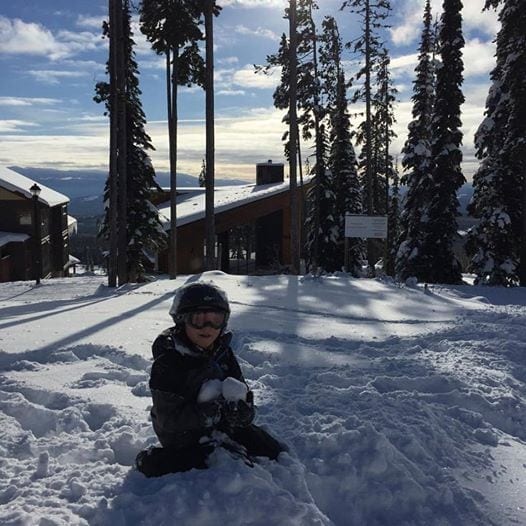
It’s not just for sports but also for staying active and safe. Now, let’s dive into what Chapmann had to say about balance training
If you missed the first part of the interview, you can check it out here.
Enjoy the interview.
Disclaimer: This article is for information only. Always talk to your doctor or trainer before starting a new balance exercise, especially if you are injured.
In the interview above, you will discover:
- How to assess your body’s balance
- Why balance training is important to improve athletic performance
- The biggest mistake athletes make when balance training
- Two balance exercises that will make every athlete better
If you are unable to watch or listen to the interview above, check out the transcript below.
What is Balance Training?
Rick: So you’ve gone through a couple of examples of exercises. Those may not even be exercises that people would think of, like sitting tall and closing their eyes. What are some of your favorite balance exercises for athletes that you recommend?
Chapmann: One of my favorites for assessing balance is having someone stand in a corner. I’ll ask them to stand there and close their eyes. That’s when they often realize how unbalanced they are.
Chapmann: You can try it too. It’s a fun way to connect with your body. Start with eyes open for 5-10 seconds, then build up. You’ll develop proprioception in your ankles and trust your body’s position.
What is the Importance of Balance Exercises?
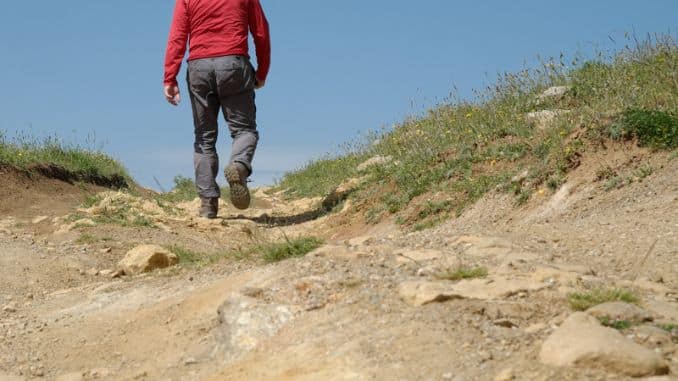
Rick: Looking at athletes or those with higher fitness levels, why should they incorporate balance training into their workouts?
Chapmann: For more active individuals, balance training is essential to maintain your activity. For example, I was running in Vancouver, and with wet conditions and leaves on the ground, it was hard to keep my pace. I actually slipped, and without balance training, I probably would have fallen completely. I was left with a bruise.
Chapmann: I think balance training is important because accidents happen. The best way to stay safe is to practice balance training, whether in the gym or at home. My proprioceptors helped me stay on my feet, almost like a cat. I did almost fall, but I saved myself. At 41, being able to avoid a fall feels great because they hurt more as you get older! (laughing)
Balance training helps athletes perform better and prevents injuries. Research shows it also benefits older adults. A study by Yuzlu and colleagues [¹] found that two types of balance training improved balance, walking, and reduced the fear of falling in older adults.
Ben Greenfield [²] is a health and fitness expert, and voted as America’s top Personal Trainer and one of the top 100 Most Influential People In Health And Fitness.
Greenfield highlights the importance of training the vestibular system (responsible for balance) through exercises like standing on one leg and using tools such as wobble boards or mini-trampolines. He also emphasizes the importance of protecting your sensory systems (eyes, ears) to maintain strong balance throughout life.
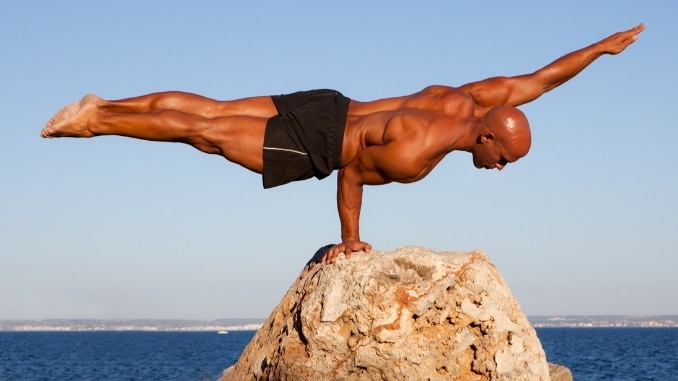
How Balance Training Can Help Prevent Common Sports Injuries
In addition to improving athletic performance, balance training plays a key role in injury prevention. Many common sports injuries stem from instability, weak muscles, or poor body awareness—all of which can be improved through balance exercises. Here are some examples of injuries that balance training can help prevent or manage:
Injury Symptoms, Causes, Treatment, and Prevention
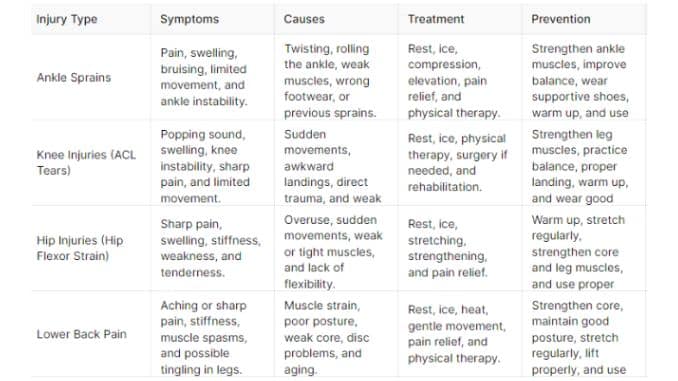
What are the mistakes that athletes make in training their balance?
Rick: Yes, they do. (laughing). Covering some of the same points about older adults, are there mistakes fit people or athletes make with balance training?
Chapmann: Yes. The biggest issue might not be a mistake but more of a mental block. It could be thinking, “I don’t know what to do for balance training.” It’s as simple as closing your eyes. Anytime you correct or adjust your posture, it’s part of the issue—just not being aware. When I say “posture,” I even think, “Am I sitting right?” Posture and balance go hand-in-hand. It’s all part of holistic fitness.
Balance exercises for athletes don’t require much extra time at all. Chapmann recommended incorporating them between regular workout sets, and I’ve started doing this myself. For example, I practice standing on one leg while brushing my teeth or do lunges while waiting for my coffee.
These simple habits have improved my balance without needing any dedicated time. And if you have kids, they might even join in and turn it into a fun challenge!
What are some examples of balance training?
Rick: What are some examples of balance training for fit individuals or athletes?
Chapmann: One example is the StrongBoard, a new balance tool. I use it alongside the BOSU ball, which has a solid platform and an air-filled dome. Some of my clients struggle with the BOSU ball, but the StrongBoard helps build confidence because there’s no fixed endpoint.
Rick: Cool. Fit individuals or athletes might benefit from bodyweight exercises for balance training, but they could also challenge themselves more with equipment like the StrongBoard.
Chapmann: Yes, any tool works as long as you use it. It’s like having a hammer—you’re more effective when you actually use the tool.
Rick: How much time should a fit person or athlete dedicate to balance training?
Chapmann: Balance training can be intense but straightforward. You don’t need to dedicate a lot of time to it. I often do balance exercises between sets. My kids sometimes join in, and their natural balance inspires me.
Chapmann: Balance training can happen anytime, anywhere, without needing dedicated time. People are busy, but it’s important to prioritize fitness. Starting the day with exercise is key. I’ve seen your morning routines and your 10 best exercises—they’re safe, simple, and quick, which is important for consistency.

Exercise Recommendations
Rick: Awesome. Good point. Do you have specific exercises or balance training you’d recommend for a fit person or athlete?
Chapmann: One of my favorites is the pistol squat. I dressed up as Deadpool this Halloween and did a pistol squat on a strong board. A pistol squat involves holding one leg up while the other leg does a full range of motion squat. I like using it with my elite and competitive athletes. It’s also a fun drinking game for me because my buddies buy me drinks when they can’t do it. (laughing)
Rick: We’ve covered most of my questions. Is there anything else you’d like to add?
Chapmann: I’d like to remind people to be comfortable in their own skin. Be confident in how you move, impeccable with your word, and lead by example.
Rick: Awesome. Where can people find more information about you?
Chapmann: I’m on social media with the handle iamkinected—spelled K-I-N-E-C-T-E-D. My name is Chapmann Cheung, spelled C-H-A-P-M-A-N-N C-H-E-U-N-G. There aren’t too many of us out there. Maybe I’ll post my Deadpool pistol squat so you’ll know it’s not Ryan Reynolds.
Rick: (laughing) Awesome. Thanks for your time, Chapmann.
Chapmann: Thank you. Mike Boyle [3] is a leading strength and conditioning coach. In his book “New Functional Training for Sports,” Boyle discusses various methods and tools to enhance athletic performance, including using balance tools like BOSU balls to improve stability and joint strength.
Personalized Balance Recovery Plan
Disclaimer: Before starting any exercise, consult with a healthcare provider or physical therapist to ensure it’s safe for your specific condition.
Pick the one that suits you best!
A. Beginner Balance Plan [4] (For Newbies)
- Goals: Improve body awareness, strengthen stabilizing muscles, and build confidence in movement through progressive balance and stability exercises.
- Duration: 10-15 minutes
- Frequency: 3-4 times a week
1. Single-Leg Stand (Eyes Open)
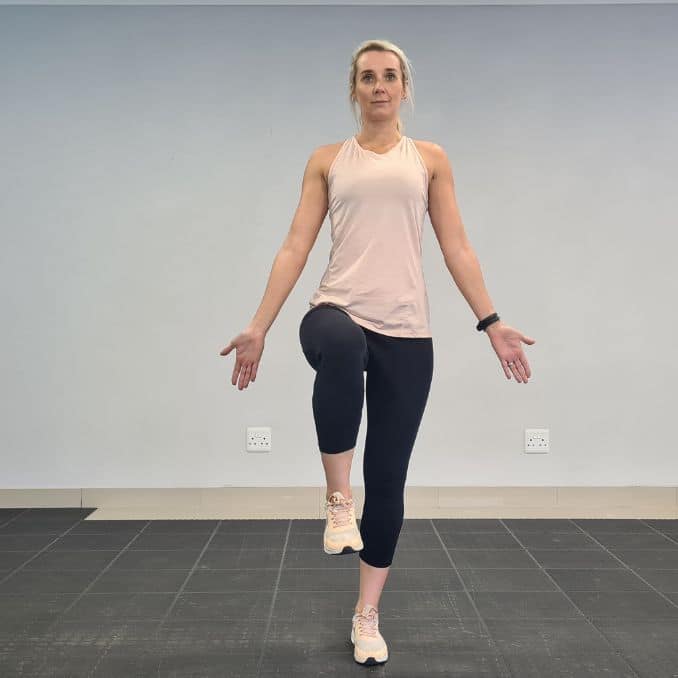
- Progression: Try closing your eyes or standing on a soft surface to increase the challenge.
- Benefits: Builds foundational balance and improves lower-body stability.
- Begin in an upright standing position with your feet hip-width apart, maintaining good alignment with your head, shoulders, and hips. Bring your arms at your sides with your hands open and facing forward for support. Engage your core. Lift one leg and stand for 20–30 seconds. Relax and repeat on the opposite leg.
2. Heel-to-Toe Walk
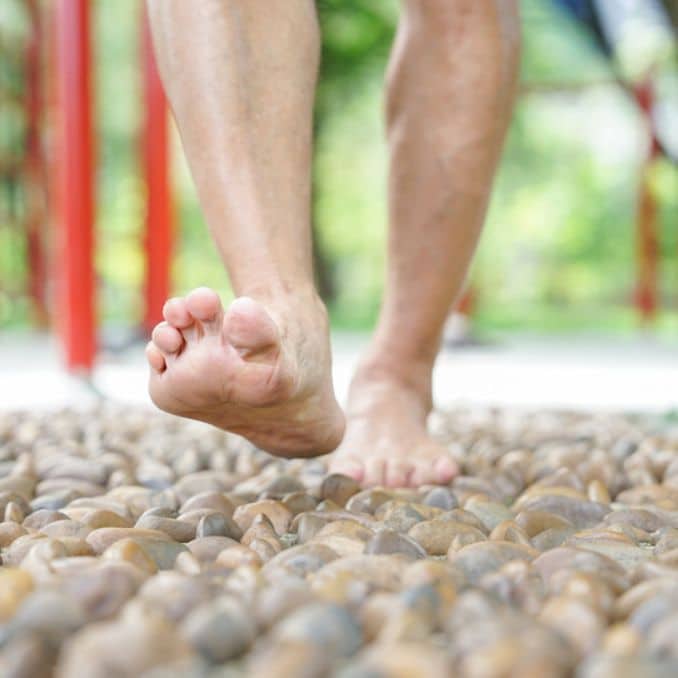
- Benefits: Improves dynamic balance and coordination
For this exercise, you can walk on a flat surface. For added stability, you can extend your arms slightly to the sides. - Begin in an upright standing position with your feet together and arms at your sides, maintaining good alignment with your head, shoulders, and hips. Keep your head up and focus on a fixed point in front of you to help maintain balance. Engage your core. Take a slow, deliberate step forward, placing the heel of one foot directly in front of the toes of the other foot with each step. Repeat the movement for about 10 to 20 steps.
- Mark Sisson [5] is an American fitness author, founder of Primal Kitchen, and a former distance runner, triathlete, and Ironman competitor. In his book, The Primal Blueprint, he encourages beginners to start with basic balance drills like single-leg stands to build proprioception, which is crucial for improving body awareness and movement, and injury prevention.
B. Intermediate Balance Plan [6] (For Active Individuals)
- Goals: Strengthen balance, prevent injury, and improve coordination.
- Duration: 15-20 minutes
- Frequency: 4-5 times a week
1. Single-Leg Romanian Deadlifts
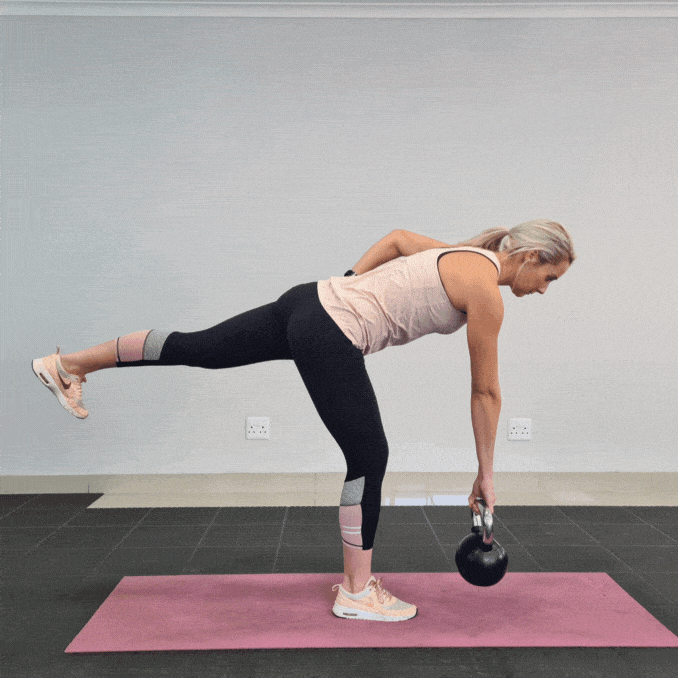
For this exercise, you can use a dumbbell or kettlebell.
- Begin in an upright standing position with your feet hip-width apart, maintaining good alignment with your head, shoulders, and hips. Hold a dumbbell (optional) in one hand and engage your core. Hinge through your hips, extending your non-standing leg straight behind you as you lower your upper body toward the floor while keeping your back flat.
- Lower until you feel a stretch in your hamstrings or your back is parallel to the floor. Return to the starting position and repeat the movement on the other leg.
Benefits: Strengthens the hamstrings, glutes, and core while improving balance.
2. Shifting Weight Laterally
- Begin in an upright standing position with your feet wider than shoulder-width apart, maintaining good alignment with your head, shoulders, hips, and legs. Engage your core. Slowly shift your weight from side to side by bending the knee of the leg that will bear the weight and pushing off the opposite foot. Continue alternating sides for about 10 repetitions.
- Benefits: Enhances stability, coordinate ion, and lateral movement, which is crucial for sports requiring quick side-to-side actions.
- A well-known physical therapist and mobility expert, Kelly Starrett [7], believes that dynamic balance exercises such as lunges and single-leg deadlifts help improve coordination and prevent injuries by stabilizing the joints. His focus is on combining strength and balance for long-term athletic health.
C. Advanced Athlete Balance Plan [8] (For Performance and Injury Prevention)
- Goals: Improve balance, enhance performance, and avoid injury.
- Duration: 20-30 minutes
- Frequency: 5-6 times a week
1. Pistol Squat:

- Begin in an upright standing position with your feet shoulder-width apart, maintaining good alignment with your head, shoulders, and hips. Engage your core. Shift your weight to one leg and extend the opposite leg straight out in front of you with your arms reaching forward for balance. Slowly bend your knee and hinge through your hips to move into a squat position while keeping the extended leg straight and off the ground.
- Drop as low as you can, then push through your heel to return to an upright standing position. Repeat the movement on the opposite leg.
- Benefits: Builds tremendous strength and balance, particularly in the legs and core.
2. Lateral Hops (Single-Leg)
- Begin in an upright standing position with your feet hip-width apart, maintaining good alignment with your head, shoulders, and hips. Engage your core as you lift one leg and soften the knee of your standing leg. Push off with the standing leg and hop laterally to the side, landing softly on the same leg with a slight bend in the knee to absorb the impact. Immediately hop to the opposite side, repeating the movement with the other leg. Start with 3 sets of 10-15 hops for each leg.
- Benefits: Challenges balance under dynamic conditions and strengthens leg muscles, improving performance in sports with quick, explosive movements.
- Strength and conditioning expert Eric Cressey [9] advises athletes to regularly incorporate advanced balance drills, especially plyometric exercises like lateral hops, to enhance stability under dynamic conditions.
- He notes that incorporating balance training in your daily routine reduces injury risk by strengthening the body’s ability to adjust quickly during high-intensity movements.
Final Thoughts
Tracking progress is essential, especially when incorporating balance exercises for athletes into your routine. Be sure to record how long you can balance on one foot or the number of reps you can do for each exercise. Keep notes each week to track your improvements and adjust your plan as needed based on your progress.
I hope you enjoyed the interview, and thank you for reading! I hope this blog inspires you to start incorporating balance exercises into your routine. Even small improvements can make a big difference!
Take care!
Rick Kaselj, MS
If you are looking for ways to eliminate pain and heal your ankle sprain properly, then click here to check out the Ankle Sprain Solved program.
FAQ
How can an athlete train for balance?
Athletes can improve balance by doing exercises like standing on one leg, using balance tools like a wobble board, or closing their eyes while standing still. These simple moves build coordination and stability.
What is the best exercise for improving balance?
The single-leg stand is a simple and effective exercise for balance. Stand on one leg for 20 seconds, then switch. To make it harder, try closing your eyes or standing on a soft surface. It’s a great way to strengthen muscles and improve balance.
What is the best exercise for stability?
The pistol squat is excellent for stability. It’s a one-legged squat with the other leg extended. This move strengthens your legs and stabilizes your joints. It’s challenging but very effective for athletes looking to boost both strength and stability.
What type of training improves balance?
Balance improves with exercises that make your body adjust to stay steady. Standing on one leg, lunges, or single-leg deadlifts are great for this. Using a balance board or Bosu ball can also help. These exercises engage your core and leg muscles to keep you balanced in different positions.

